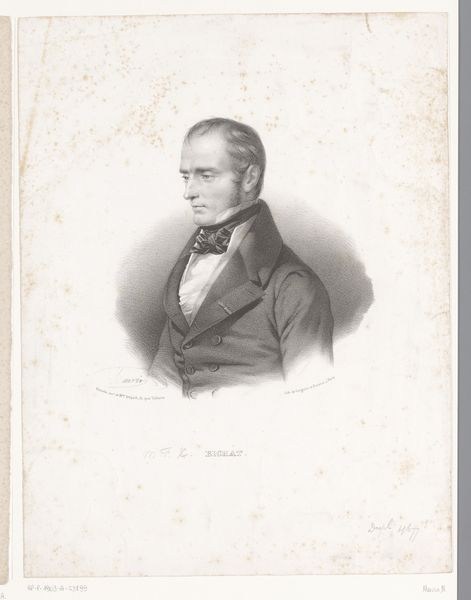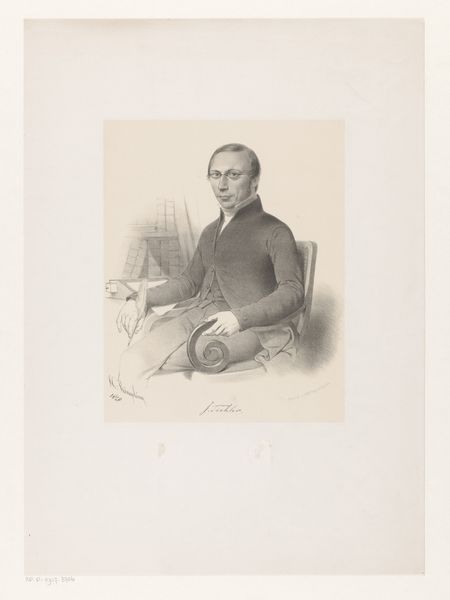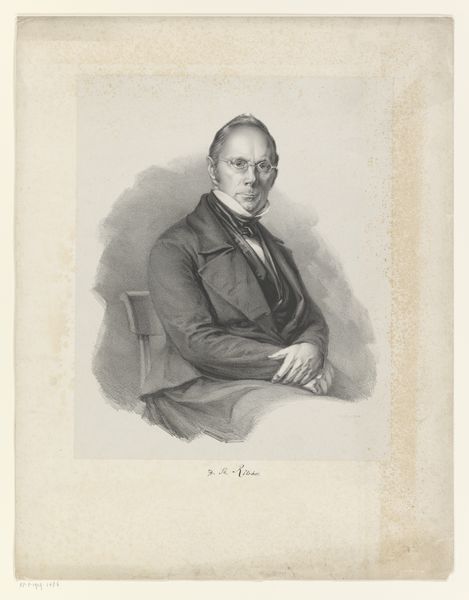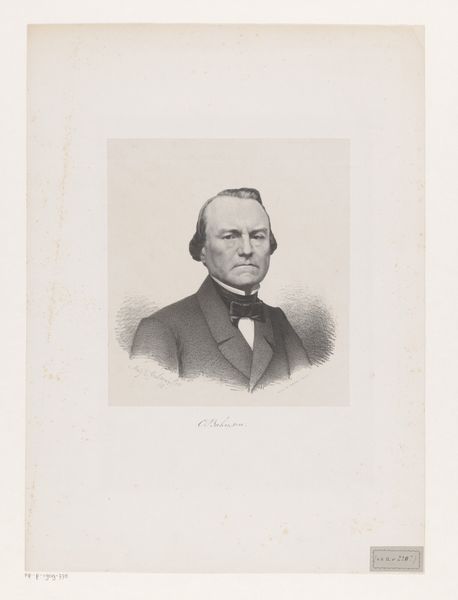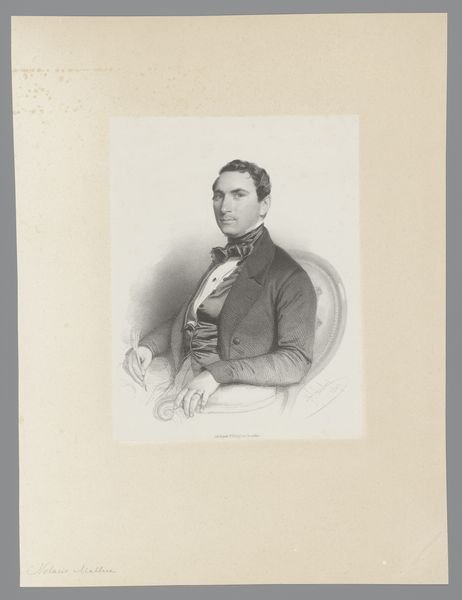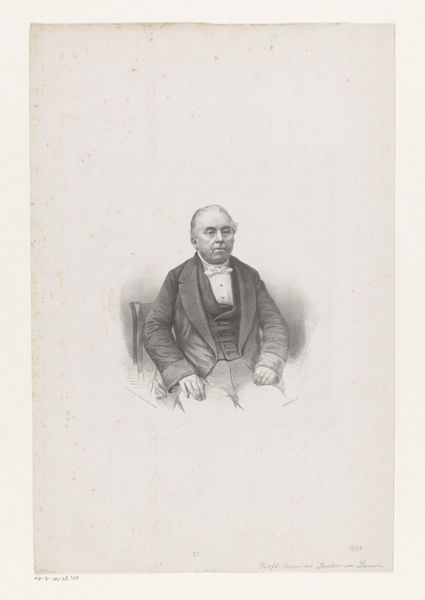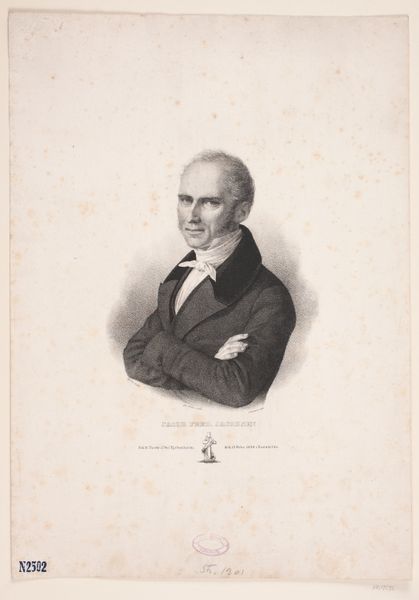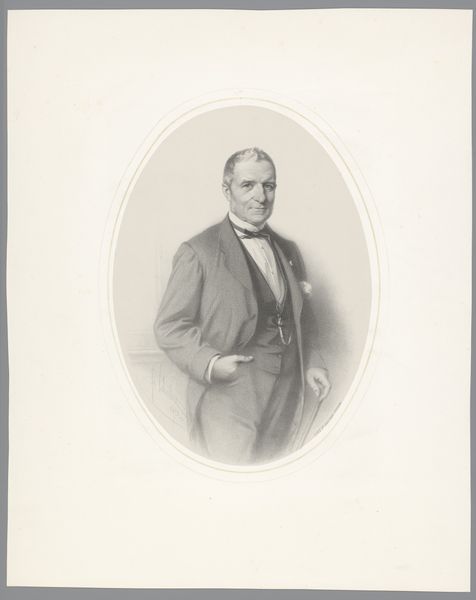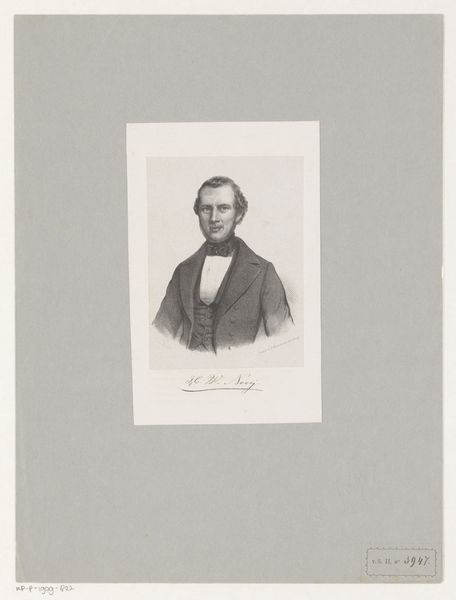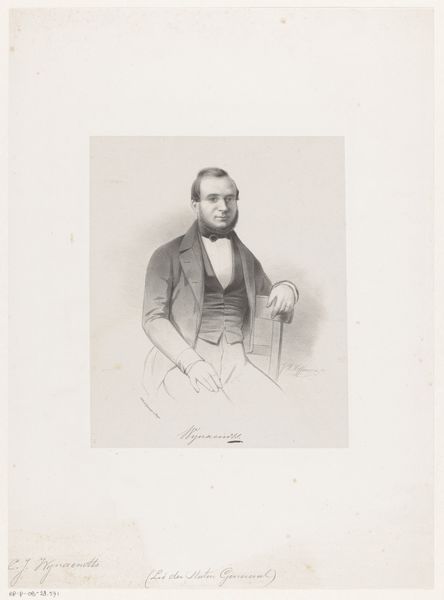
drawing, pencil
#
portrait
#
pencil drawn
#
drawing
#
pencil sketch
#
pencil drawing
#
pencil
#
portrait drawing
#
academic-art
#
realism
Dimensions: height 517 mm, width 428 mm
Copyright: Rijks Museum: Open Domain
Curator: Looking at this drawing, what strikes you first? Editor: The tonality. The greyscale is carefully managed; the values, soft. It's almost photographic in its delicate rendering. Curator: This is Joseph Schubert’s 1862 portrait of François de Cannart d’Hamale, rendered in pencil. It resides here at the Rijksmuseum. It’s intriguing how portraiture evolved into the photographic medium, isn’t it? Editor: Indeed. I am impressed by the hatching and cross-hatching that builds up the forms. Notice the contrast in textures; the smooth planes of his face, versus the softer fabrics of his jacket. Curator: Schubert was certainly tapping into the academic artistic conventions of the time, which greatly favored highly-detailed realism. His subject, François de Cannart d'Hamale, was obviously someone of importance. His confident pose indicates as much. His family were ennobled so he was clearly a pillar of the community and the artwork serves as a demonstration of his position. Editor: The adjacent sculptural elements add another layer. The soft chiaroscuro indicates the light source in the scene, as the gentleman is bathed in light with an attention-grabbing almost theatrical presence, offset by the relatively mundane and understated use of pencil on paper. Curator: The portrait's purpose extends beyond mere likeness. It affirms not just his status, but the values associated with his class, and the system that ennobled it. Schubert certainly fulfilled that need for the sitter in 1862. Editor: It makes you wonder what François de Cannart d'Hamale would make of its preservation today. The semiotic interplay between realism, social stature, and graphite provides quite a captivating synthesis. Curator: Yes, tracing this artwork reveals much about the cultural priorities of that period, highlighting art’s deep entwinement with status and legacy. Editor: Precisely, and it’s an excellent case study in the material possibilities that are uniquely intrinsic to art-making with pencil.
Comments
No comments
Be the first to comment and join the conversation on the ultimate creative platform.
